Innovative New Art Exhibit Showcases the Importance of Coral Reefs
Artist Mara G. Haseltine combines ingenuity with practicality to draw attention to environmental issues facing coral reefs.
Published June 13, 2024
By Nick Fetty
Art and science come together in a striking new exhibition at The New York Academy of Sciences that celebrates World Oceans Day.
The exhibit, entitled “Blueprints to Save the Planet: 1 Coral Reefs: Exploring the ‘Art’ of Sustainable Reef Restoration,” includes a replica of the Rococo Cocco Reef designed by international environmental and sci-artist Mara G. Haseltine. It is currently on display in the Academy’s lobby at 115 Broadway in downtown Manhattan.
Broadly speaking, Haseltine’s work addresses “the link between our cultural and biological evolution.” Her current exhibit is a 20-year retrospective of her past work, but it also takes what she calls a “future-spective” by showcasing new designs for a novel coral reef in Cuba.
“A lot of it’s based on my imagination but founded in real science,” said Haseltine.

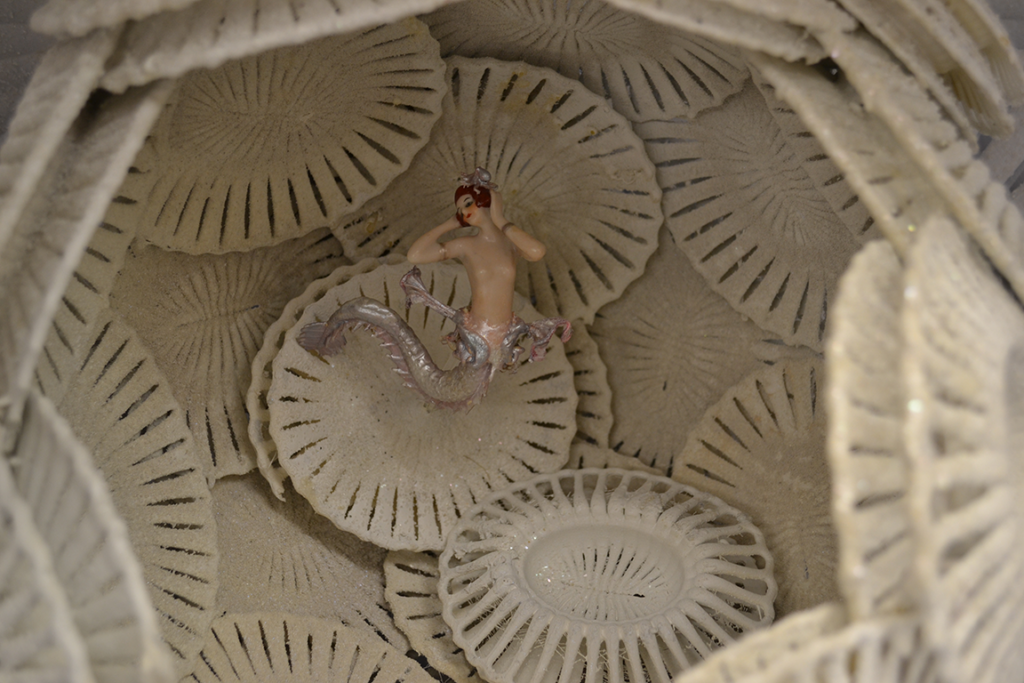
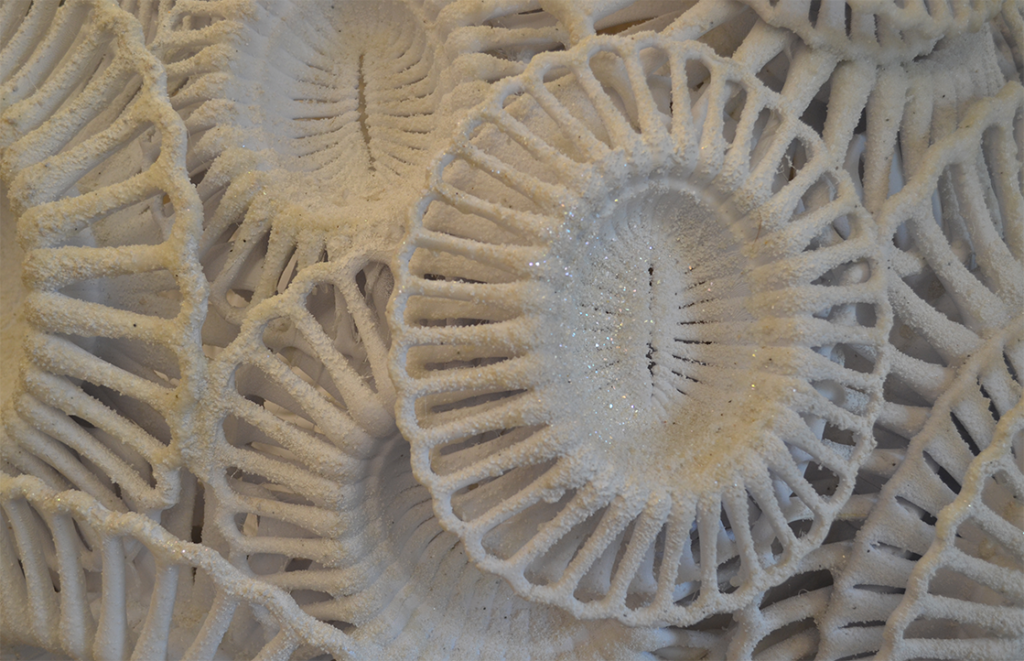
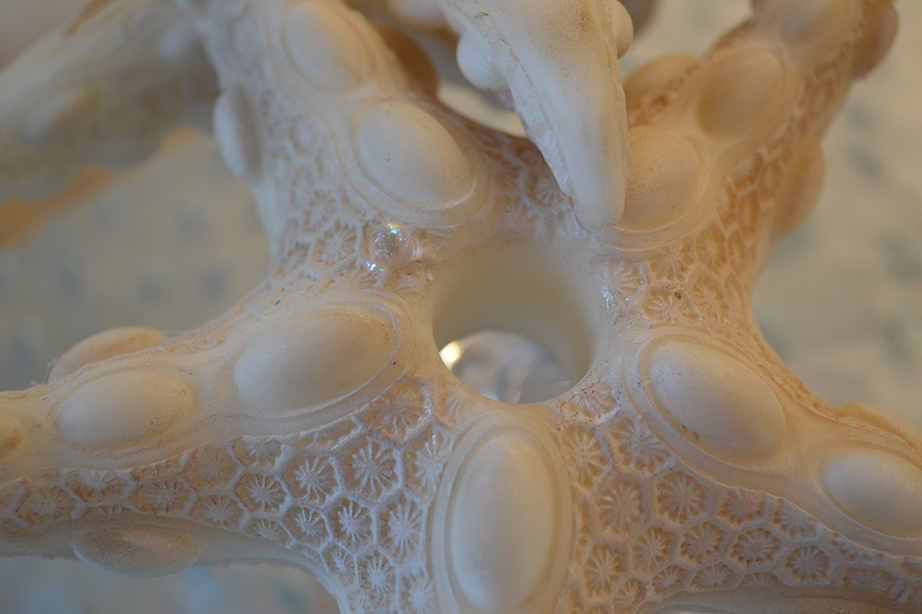
Combining Art and Science
Haseltine explains that we’re currently in the Age of the Anthropocene, which is considered the sixth mass extinction. She emphasizes that this is the first age of mass extinction caused by human activity, specifically the unsustainable use of land, water, and energy. Her work is focused on rectifying and mitigating issues that contribute to the demise of the planet’s natural environment.
The Roccoco Cocco Reef sculpture is a prototype for an ecotourist and experimental dive site. Ultimately this underwater sculpture site will be digitally fabricated primarily from recycled coral skeletons – calcium carbonate made from bleached coral. Similar to the unicellular plankton skeleton of a coccolithophore, which sequesters carbon dioxide when it’s oxygenating photosynthetic cells die and it sinks to bottom of the sea, the Rococo Cocco Reef would also be made of calcium carbonate and thus act as a carbon sink.
“The sculpture is inspired by one of the largest carbon sinks on the planet, coccolithophore skeletons, after an oxygenating bloom and they have sunk to the ocean’s floor,” said Haseltine, adding that the design embraces the concept of biomimicry.
Haseltine relies on the expertise of marine biologists and field scientists in her work. Fernando Bretos, a program officer for The Ocean Foundation, brought his deep knowledge on coral reefs in the Caribbean to this project.
“The coral is really the front line,” said Bretos. “It’s the food, it’s the shelter, it’s the defense. It’s everything for coastal communities in the Caribbean.”
Geotherapy
Haseltine has also worked closely with Tom Goreau, PhD, Director of the Global Coral Reef Alliance. Her collaboration with Dr. Goreau first started when they worked together to design “Floating Reef Structures” for the United Nations’ Small Island Developing States.
The design is based on a fractal pattern, known for its efficiency in dissipating wave energy, thereby safeguarding vulnerable coastlines from erosion and storm damage. Within a similar vein, their current project follows the concept of Geotherapy.
“Geotherapy treats the Earth as a medical patient suffering from severe heatstroke,” said Dr. Goreau. “The first steps of therapy are to identify the causes and regenerate the Earth’s natural biogeochemical and physical processes that regulate and stabilize temperature to bring it down to safe levels as fast as possible.”
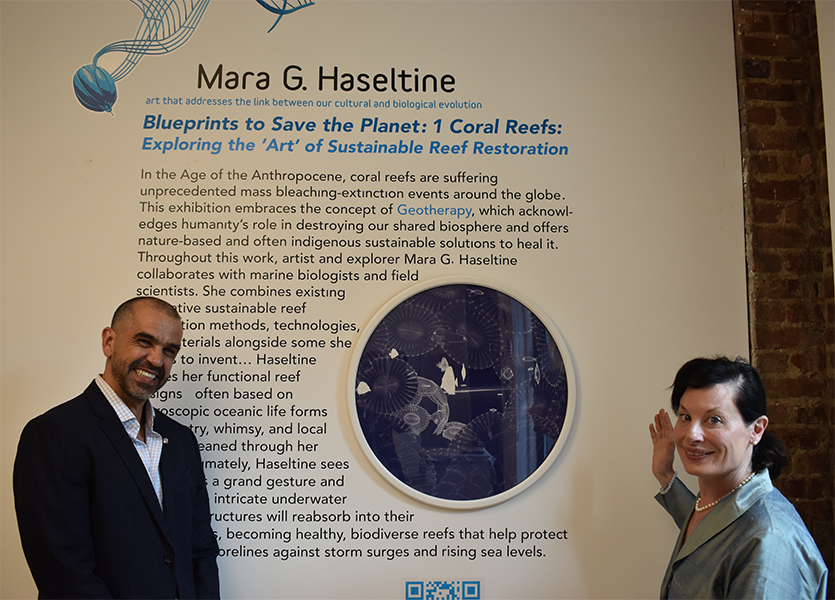
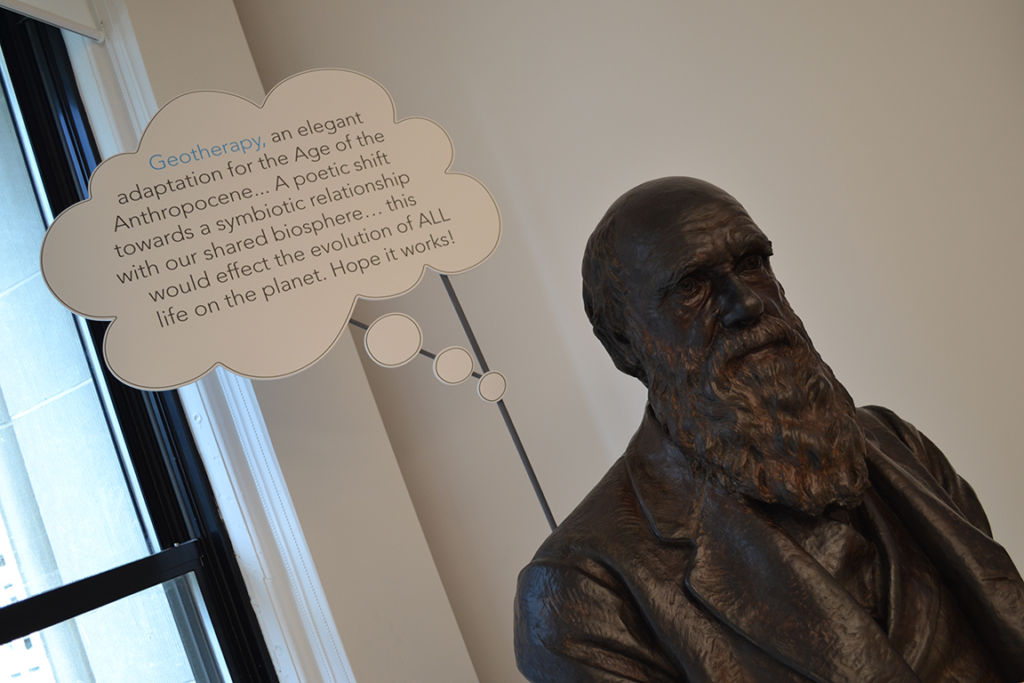
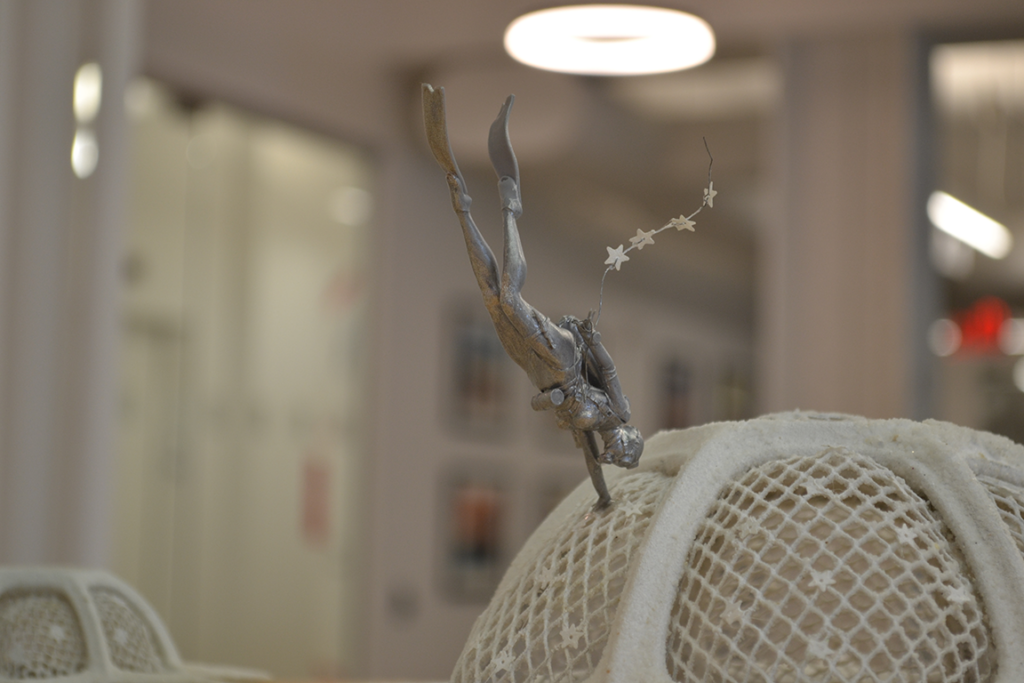

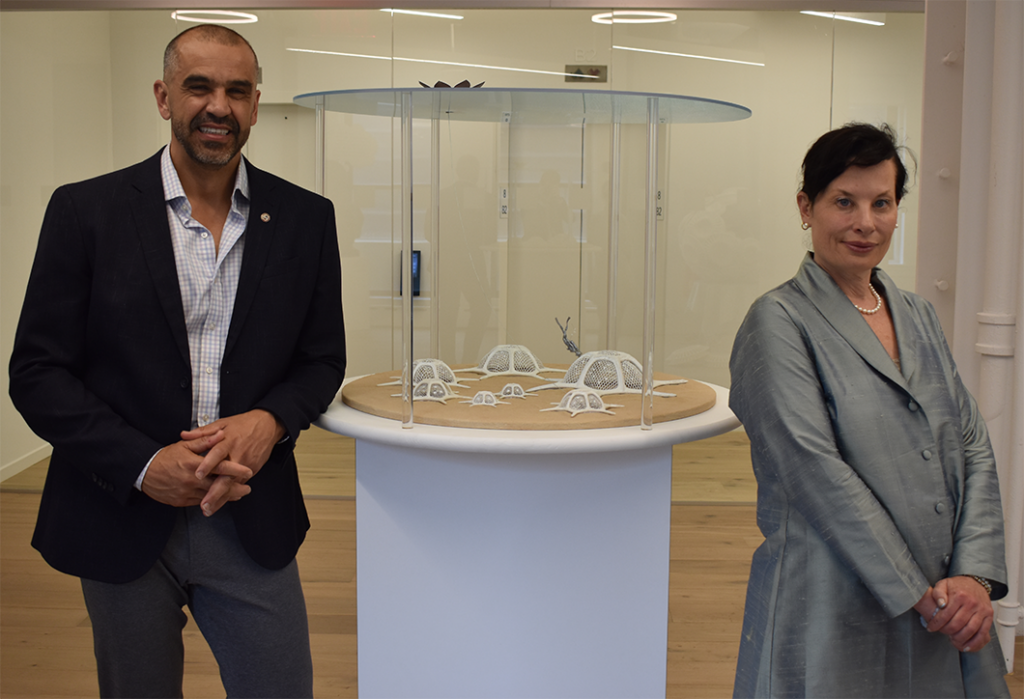
A Message That Resonates
Bretos said he was happy to work with an artist to bring awareness to the issue. While he acknowledges the great work of fellow scientists, he said that artists are able to communicate messages in a way that can resonate differently with people.
“As scientists, we struggle a lot with getting the message out about ocean literacy,” said Bretos. “Art [on the other hand] is visual. It doesn’t speak a language. Not everyone can relate to a scientific paper, [but] anyone can relate to one of Mara’s sculptures.”
The exhibit was installed in coordination with the United Nations’ World Oceans Day which was celebrated on June 8, 2024. While this is not the first time she has had her art on display at the Academy, Haseltine said she appreciates the opportunity to work with an organization that “has such an outstanding academic reputation.”
“I mean, Charles Darwin was an early, honorary member of the Academy,” said Haseltine. “Need I say more?”
